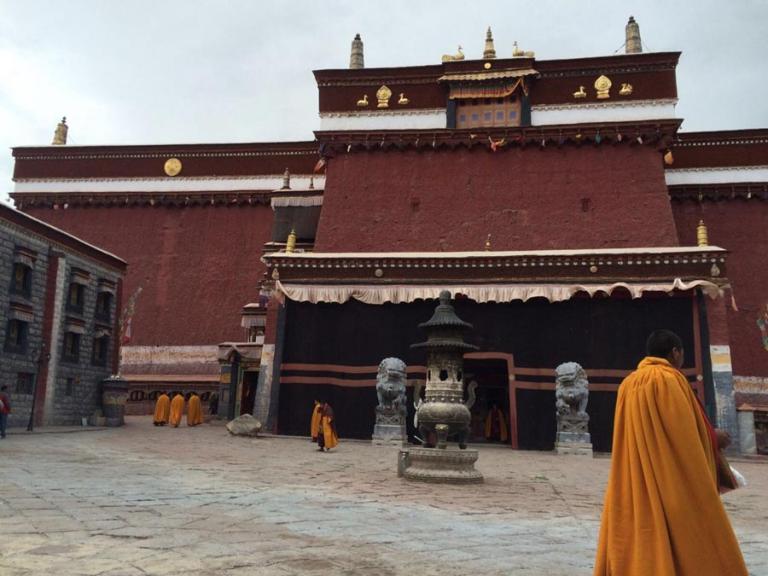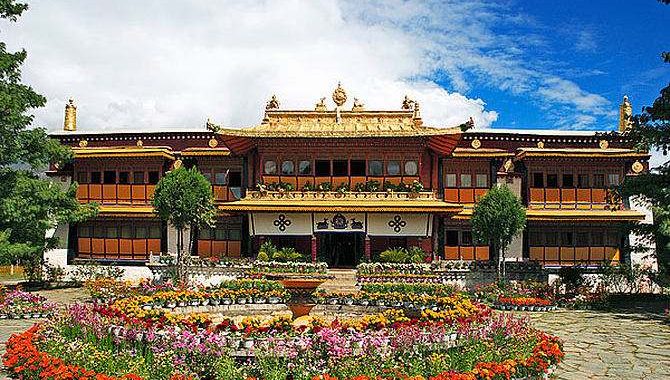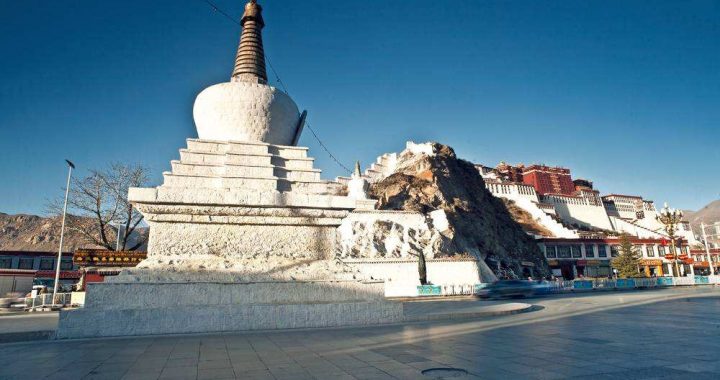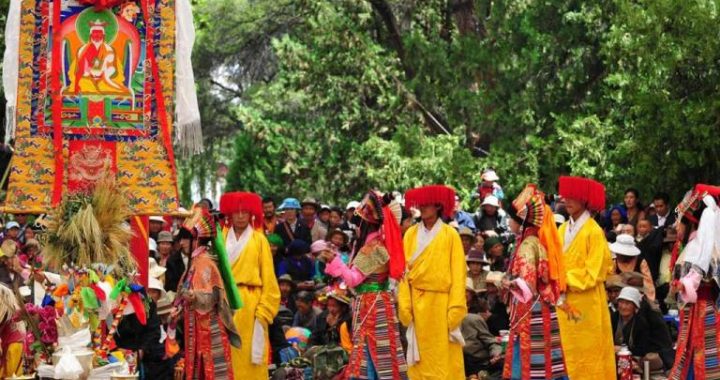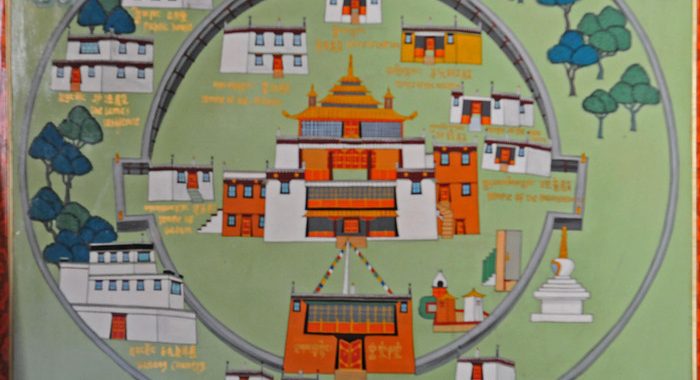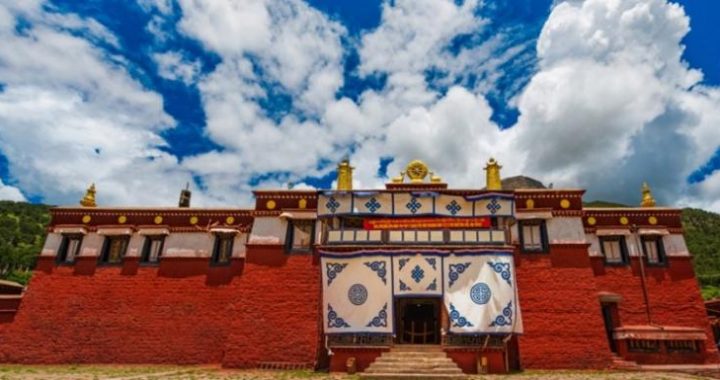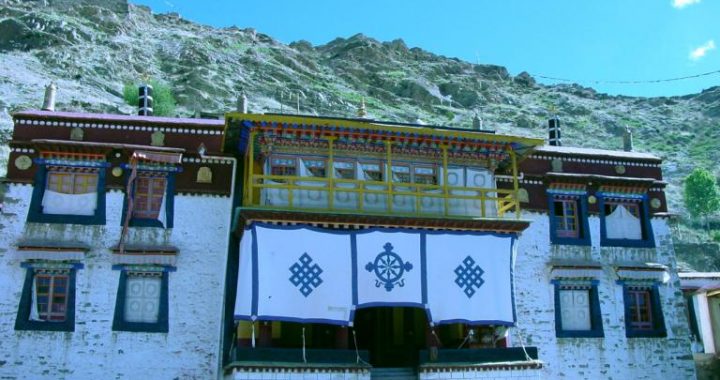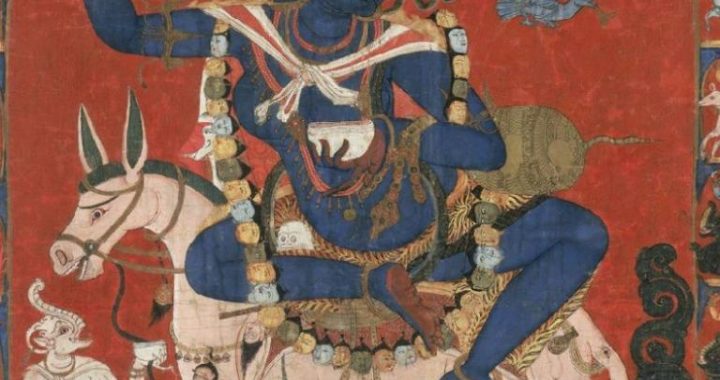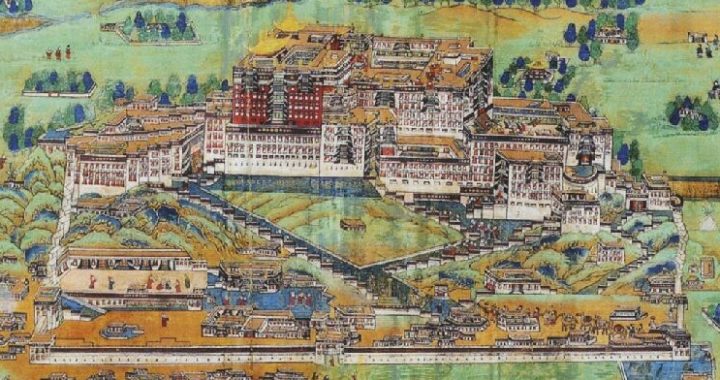The Outstanding Representatives of Tibaten Palaces and Temples
5 min readThe Paragon of Tibetan Castle-Palaces:Potala Palace
Located at the protruding ridge of the Maburishan Mountain,or the Red Mountain,which is about 2,000 meters above the sea level,Potala Palace in the center of the ancient city Lhasa can be seen from any corner in the city.The Potala Palace well fits with the geographic conditions of the Tibetan plateau seems to ascend the mountain.This Palace with its unique location at the precipice,its grand architecture and majestic style is the landmark of Lhasa as well as Tibet in that it is the highest,grandest and best-kept ancient temple complex.It marks the culmination of ancient architecture of Tibet.It has not only been enlisted into the first batch of state key protection units of cultural relics,but also has been included into The World Heritage List by the UNESCo.
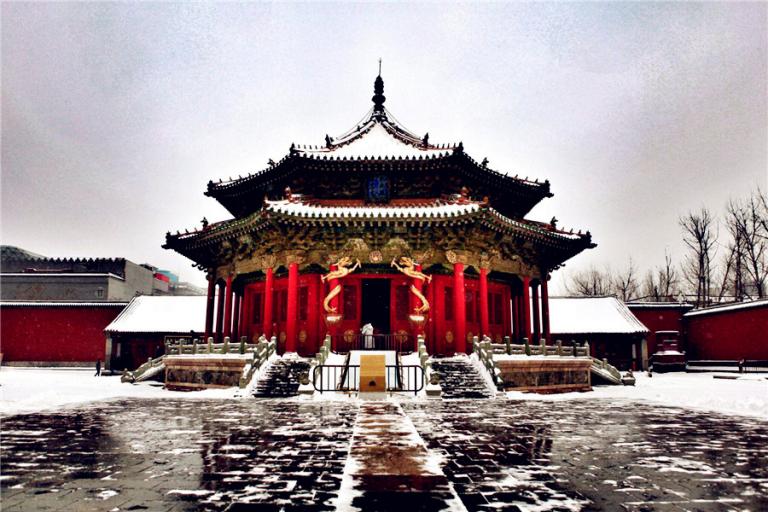
The ancient complex of the Potala Palace was first built in the seventh century comprising palaces,castles and temples,so this architectural masterpiece boasts a history of over 1,300 years.At that time the Tubo king Songtsen Gampo had it constructed for Princess Wencheng who he was going to marry from the Tang dynasty.
“Potala”in Tibetan means the palace for the Bodhisattva.The Potala Palace in the Tang dynasty didn’t assume its present scale and most of the original buildings went into ruins amid mutinies and lightning strikes.The Potala Palace as we see today was constructed in 1645 by the fifth Dalai under the support of the Qing dynasty.
Then the palace was expanded by the following generations of Dalais.It is the place where Dalai Lama lived and conducted political affairs as well as an essence of Tibetan architecture.
Rising from the south of the Maburishan Mountain,the Potala Palace ascends to the top of the mountain with its structures in perfect harmony with the mountain ranges.It covers around 120,000 square meters,nearly across the whole the Maburishan Mountain.Being 119 meters high and 360 meters wide,the entire complex appears to be of 13 stories,but actually has 9 stories only.This architectural complex comprised of castles,palaces,temples and other types of buildings is world-renowned on the strength of its great historic,artistic value as well as the treasures housed inside.
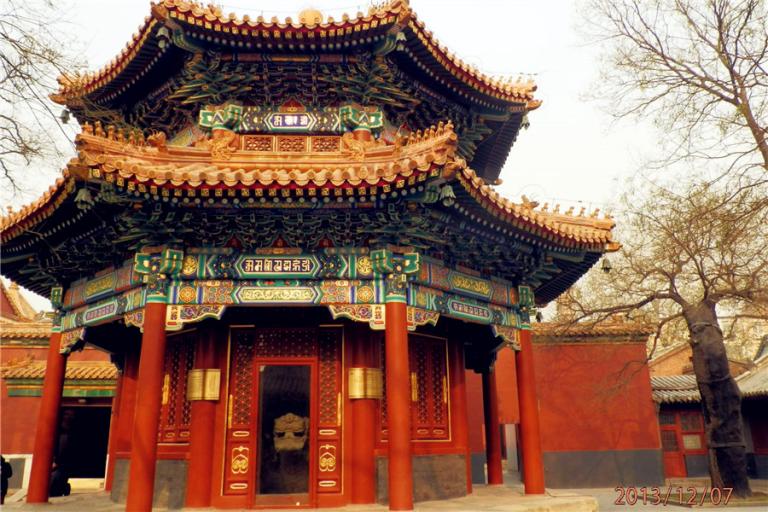
The Potala Palace mainly consists of the Red Palace,the White Palace,the Dragon King Pond behind the mountain and the”snow”at the foot of the mountain with the former two components constituting the major part of the architecture.The RedPalace is where the Yidam is enshrined and religious ceremonies are held with its major building being the Dalai Lama’s soul stupa and various Buddhist chapels at the heart and the top of the complex respectively signifying Mount Sumeru and the universe’s center.The two seven-story white pagodas with one on either side of thered palace look like ladders with windows open to all sides at each level;atop the palace is the Tibetan flat structure where successive Dalais lived and conducted political affairs.The Dragon King Pond serves as the backyard of the Potala Palace.
In the middle of the pond there is the Dragon King Palace and other buildings.The “snow”at the foot of the Potala Palace consists of the prison,the sutra printing house,the workshop and the stall,so on and so forth,all of which are encircled by walls and fortresses.
The architectural art of the Potala Palace as reflected in its stone-wooden structures in the traditional Tibetan architectural style impresses one that the constructions are spacious and orderly.The palace complex’s cornerstone is two to five meters thick with the huge granite inserted into the ground, in other words, the cornerstone looks extremely solid and firm. The constructions appear grand with corridors zigzagging inside. The sutra halls, the Buddhist chapels and the patios are all structured of stone and wood. Atop the palace complex are either saddle roofs or up-tightening roofs reminiscent of the Han style architecture. Under the eaves the walls feature gilt bronze decorations in the form of various Buddhist ritual objects, thus exuding astrong flavor unique of Tibetan Buddhism. The pillars and beams are all covered with bright paintings and gorgeous carvings.
The glamour of the Potala Palace is also reflected in its dazzling decorations such as the colorful frescoes and numerous priceless cultural relics and Buddhist art objects.A11 the halls of the Potala Palace, whether the grand ones or the small ones, as well as the corridors and passages are decorated with sorts of frescoes featuring the Tibetan Buddhism evolution, Princess Wencheng’s entry into Tibet, the life journey of the fifth Dalai Lama, the ancient Tibetan architecture as well as portraits of Vajra and Buddha.A1l the frescoes in bright color and delicate strokesfeaturing lifelike characters depict story-telling plots and present super artistic imagination.
Aside from the frescoes, the Potala Palace houses a lot of valuable cultural relics and Buddhist art objects best represented by the soul stupa of the fifthDalai. This 17.4-meter-high soul stupa is the highest one in the palace with its gilt body inlayed with colorful gems. It involved 110,000 taels of gold to construct it. Other soul stupas, though shorter than that of the fifth Dalai, are also decorated with a lot of gold and jewelry. In addition, inside the palace there are hundreds of thousands of lifelike Buddha statues in gold, silver, bronze, jade and sandalwood; all of them are invaluable cultural relics.
Upward the mountain the great complex of the Potala Palace seems to tighten up.
Its resplendent gold top incorporating the characteristics of the Han-style flying eaves and those of the Tibetan architecture on the plains lends the Potala Palace strong cohesion, uplifting power and majestic charm. Through many a rebuilding and renovation the Potala Palace proper and its surrounding buildings are maintained, which contributes to the architectural complex’s oneness of form, function and flavor. The unique charm of Potala Palace lies in its being in tune with the red mountain. Whether in the evening or in the morning from whichever angle the architecture is found to be in perfect harmony with its surroundings, which appeals to each visitor.
